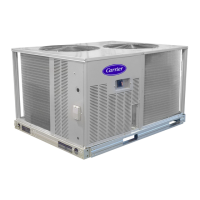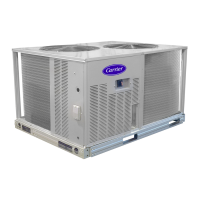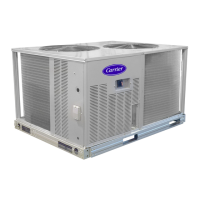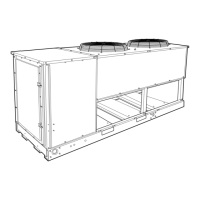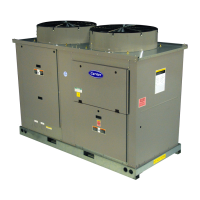ATTENTION INSTALLERS AND SERVICE TECHNICIANS!
R-410A Refrigerant Quick Reference Guide
• R-410A refrigerant operates at 50-70 percent higher pressures than R-22. Be sure that servicing equipment
and replacement components are designed to operate with R-410A refrigerant.
• R-410A refrigerant cylinders are rose colored.
• Recovery cylinder service pressure rating must be 400 psig, DOT 4BA400 or DOT BW400.
• R-410A refrigerant systems should be charged with liquid refrigerant. Use a commercial type metering
device in the manifold hose when charging into suction line with compressor operating.
• Manifold sets should be 700 psig high side and 180 psig low side with 550 psig low-side retard.
• Use hoses with 700 psig service pressure rating.
• Leak detectors should be designed to detect HFC refrigerant.
• R-410A refrigerant, as with other HFCs, is only compatible with POE oils.
• Vacuum pumps will not remove moisture from oil.
• Do not use liquid-line filter driers with rated working pressures less than 600 psig.
• Do not leave R-410A refrigerant suction line filter driers in line longer than 72 hours.
• Do not install a suction-line filter drier in liquid-line.
• POE oils absorb moisture rapidly. Do not expose oil to atmosphere.
• POE oils may cause damage to certain plastics and roofing materials.
• Wrap all filter driers and service valves with wet cloth when brazing.
• A factory-approved liquid-line filter drier is required on every unit.
• Do NOT use an R-22 expansion device.
• If indoor unit is equipped with an R-22 expansion device, it must be changed to a hard-shutoff R-410A
refrigerant expansion device.
• Never open system to atmosphere while it is under a vacuum.
• When system must be opened for service, recover refrigerant, evacuate then break vacuum with dry
nitrogen and replace filter driers. Evacuate to 500 microns prior to recharging.
• All indoor coils must be installed with a hard-shutoff R-410A refrigerant expansion metering device.
• Do not vent R-410A refrigerant into the atmosphere.
• Do not use capillary tube coils.
• Observe all warnings, cautions, and bold text.
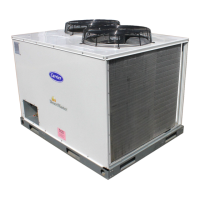
